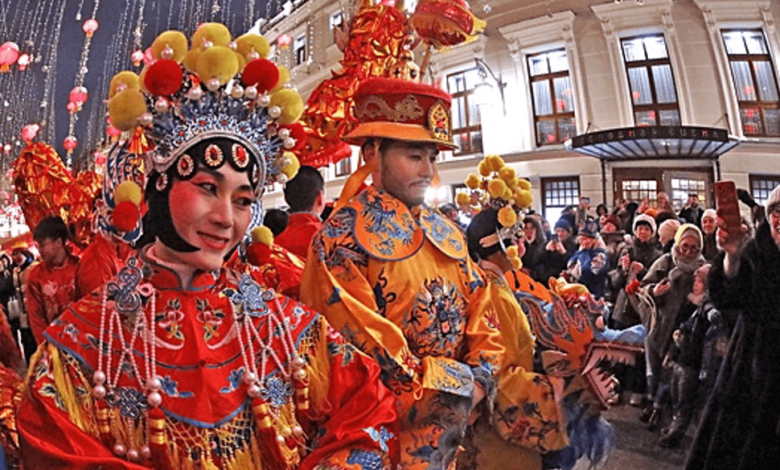Named 5 places in Russia, where you can go for Chinese New Year

So, this year for the first time `iroko celebrates Chunjie Moscow, it is timed to the 75th anniversary of the establishment of Chinese-Russian diplomatic relations. All major events are scheduled from February 9 to 18.

Central streets have already been decorated with national decorations, fairs with dimsums and stalls with handmade souvenirs have been organized. Free cooking classes, creative workshops and performances of Chinese artists are also planned for these days. On Novy Arbat it will be possible to learn to play Go – an ancient board game for logic, in the Moscow Zoo there will be interactive tours, master classes and games about pandas, and on VDNKh there will be free master classes on qigong, i.e. health-improving practices.
The festival of Chinese folk culture will also start at the Sun of Moscow Ferris wheel with a dragon show. “Aptekarsky Ogorod” will be transformed taking into account the traditions of the Lunar New Year: visitors to the Subtropical Greenhouse will be waiting for bright red lighted lanterns, garlands and floral-citrus aroma.
This year’s Chinese New Year began to be celebrated in the northern capital as early as January 26, the celebrations will last for three weeks and will end on February 16. The Year of the Green Wood Dragon in St. Petersburg is greeted beautifully: the city’s theaters, museums, and libraries are planning more than fifty events, in one way or another devoted to Chunjie and the culture of oriental peoples. No exception was the exhibition in Gatchina “The Empire looks to the East”, based on the journey of Tsesarevich Nicholas Alexandrovich to Siberia, the Far East, Japan, India and China.
In the Museum of Printing the visitors will be told the history of paper creation in China and will have a master class on its manual production by the method of “floating sieve”. The multimedia immersion space “Lumion” will host the Great Russian-Chinese Concert. The unusual decoration of the Troitsky Bridge with red illumination will continue until February 24, symbolizing the long-standing tradition of celebrating the Chinese New Year in the city on the Neva. It is already ten years old.
In Nizhny Novgorod, events timed to celebrate the Chinese New Year will be held on February 10. On this day, master classes on weaving Chinese knots, writing characters, tea ceremony and mask painting for children and adults are planned in the city’s main park, as well as a costume parade with huge dragon models and funny masks.
Also on this day Vladivostok will celebrate the Chinese New Year officially for the first time in many years. The fact is that the tradition of mass festivities originated here in the late 19th century, when the Chinese living in the city organized processions with a dragon, launched fireworks and lanterns into the sky. With the advent of Soviet power, the holiday with religious roots was banned. The main events in this Russian city will take place on the main square and in the Sergey Lazo Park. Guests will enjoy Chinese tea tasting, festive trade, as well as entertainment on the skating rink and slide. The program includes kite flying master classes. In the evening there will be a festive concert.
Large-scale mass festivities are also planned in Ulan-Ude in the coming days. The fact is that in early February the residents of the republic also celebrate one of the most important Buddhist holidays – Sagaalgan. Like Chunze, it is associated with the arrival of spring and the onset of the New Year according to the lunar calendar. This year the meeting of the White Month fell on February 10, which became an official day off in the region. At the same time, traditional rites, according to which Buryats prepare for the celebration, clean their houses and prepare offerings, began on February 6. In Ulan-Ude the festivities will last until February 20 inclusive.
Chinese New Year is one of the most important holidays in Chinese culture. The holiday falls on the first day of the first month of the lunar calendar, which corresponds to the end of January or early February in the Gregorian calendar.












